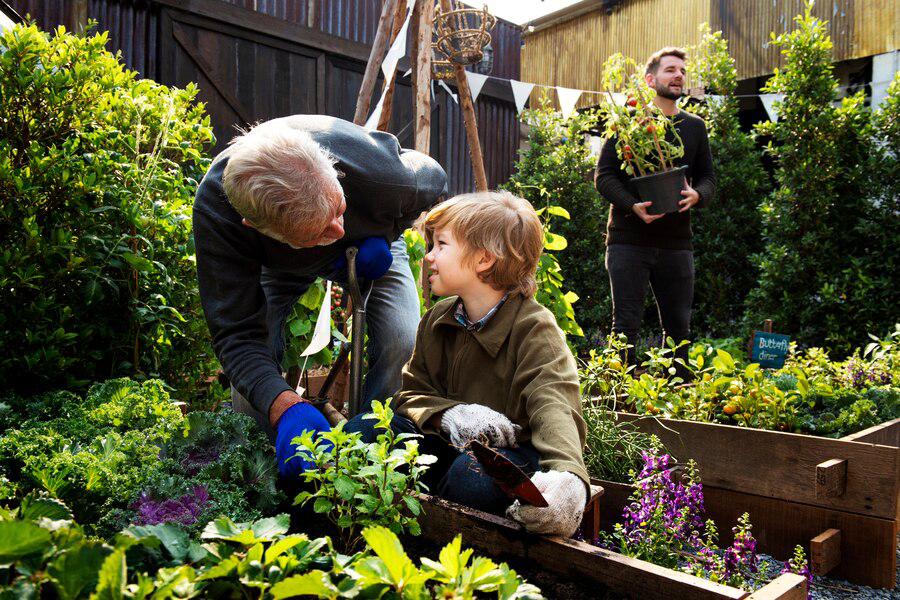In today’s world, where environmental consciousness is more important than ever, sustainable landscaping practices have become a vital aspect of responsible living. If you’re a resident of Prescott, Arizona, or simply passionate about sustainable living, you’re in the right place. Welcome to “The Ultimate Guide to Sustainable Prescott Landscaping Practices.”
Prescott, with its unique desert climate and stunning natural beauty, offers a myriad of opportunities to embrace sustainability in landscaping. From water conservation to native plant selection, this guide will delve into every aspect of creating a landscape that not only enhances the beauty of your property but also contributes positively to the local ecosystem.
Whether you’re a seasoned gardener looking to refine your techniques or a newcomer eager to adopt eco-friendly practices, this comprehensive guide will equip you with the knowledge and tools necessary to transform your outdoor space into a sustainable oasis. Join us on this journey toward a greener, more sustainable future in Prescott’s landscapes.
Introduction to Sustainable Landscaping in Prescott

Prescott, Arizona, renowned for its stunning natural landscapes and diverse ecosystems, presents a unique setting for sustainable landscaping practices. As awareness of environmental issues grows and concerns about resource depletion and climate change intensify, the need for sustainable landscaping becomes increasingly evident. In this introductory guide, we’ll delve into the principles of sustainable landscaping and explore how they can be applied to preserve the beauty and ecological integrity of Prescott’s outdoor spaces.
- Sustainability in Landscaping: Sustainable landscaping entails creating and maintaining outdoor spaces that enhance environmental quality, conserve natural resources, and promote biodiversity. In Prescott, where water scarcity and desert conditions pose significant challenges,
sustainable landscaping practices play a crucial role in preserving the delicate balance of the local ecosystem.
- Preserving Prescott’s Natural Beauty: The picturesque landscapes of Prescott, characterized by rugged mountains, sprawling deserts, and lush forests, serve as a source of inspiration and tranquility for residents and visitors alike. Sustainable landscaping seeks to safeguard these natural assets by minimizing environmental impacts and fostering harmony between human development and the surrounding ecosystem.
- Benefits of Sustainable Landscaping: The benefits of sustainable landscaping extend beyond environmental preservation. By incorporating native plants, conserving water, and reducing chemical inputs, sustainable landscapes in Prescott can enhance property aesthetics, increase property values, and lower maintenance costs. Moreover, sustainable landscaping practices contribute to the overall health and well-being of the community by creating spaces that are conducive to outdoor recreation and relaxation.
- Challenges and Opportunities:While the arid climate and limited water resources present challenges for landscaping in Prescott, they also provide opportunities for innovation and creativity. By embracing xeriscaping principles, utilizing drought-tolerant plants, and implementing water-efficient irrigation systems, homeowners and landscapers can create beautiful and resilient landscapes that thrive in the desert environment.
- Community Engagement and Education: Achieving sustainable landscaping goals in Prescott requires collective action and ongoing education. By fostering a sense of community stewardship and providing resources for learning and collaboration, local organizations, government agencies, and residents can work together to promote sustainable landscaping practices and preserve the natural beauty of Prescott for future generations.
Water Conservation Strategies for Prescott Landscapes
Prescott, Arizona, known for its semi-arid climate, faces challenges regarding water scarcity and conservation. With limited annual rainfall and increasing demands on water resources, adopting effective water conservation strategies is essential for sustainable landscaping practices in the area. This article explores various techniques and tips for conserving water in Prescott landscapes, promoting environmental sustainability and responsible water management.
Choose Drought-Tolerant Native Plants
One of the most effective ways to conserve water in Prescott landscapes is by selecting drought-tolerant native plants. Native plants are naturally adapted to the region’s climate and soil conditions, requiring minimal irrigation once established. Species such as desert marigold, penstemon, and agave are excellent choices for low-water landscaping. By incorporating native flora into your landscape design, you can significantly reduce water usage while maintaining a vibrant and attractive outdoor space.
Implement Efficient Irrigation Systems
Opting for efficient irrigation systems is crucial for minimizing water waste in Prescott landscapes. Drip irrigation, for example, delivers water directly to the root zone of plants, reducing evaporation and runoff compared to traditional sprinkler systems. Additionally, investing in smart irrigation controllers allows for automated scheduling based on weather conditions and plant water requirements, optimizing water usage throughout the year. Regularly inspecting and maintaining irrigation equipment helps prevent leaks and ensures optimal performance, further conserving water resources.
Mulch for Moisture Retention
Mulching is a simple yet effective technique for conserving soil moisture and reducing evaporation in Prescott landscapes. Organic mulches, such as wood chips, bark, or compost, help retain moisture, suppress weed growth, and regulate soil temperature. Apply a layer of mulch around trees, shrubs, and garden beds to conserve water and promote healthy plant growth. Mulching also improves soil structure and fertility over time, enhancing overall landscape sustainability.
Practice Water-Wise Planting and Design
When planning your Prescott landscape, consider water-wise planting and design principles to maximize water efficiency. Grouping plants with similar water requirements together allows for more targeted irrigation and reduces water waste. Additionally, strategic placement of trees and shrubs can provide shade and wind protection, reducing evaporation and water loss from the soil surface. Incorporating permeable paving materials and rain gardens into your landscape design helps capture and utilize rainwater, further enhancing water conservation efforts.
Collect and Reuse Rainwater
Harvesting rainwater is an excellent way to supplement irrigation needs and reduce reliance on municipal water sources in Prescott landscapes. Install rain barrels or cisterns to capture rainwater from rooftops and downspouts, storing it for later use in landscaping irrigation. Utilizing rainwater for outdoor watering not only conserves potable water but also reduces stormwater runoff and erosion. Implementing rainwater harvesting systems supports sustainable water management practices and enhances landscape resilience in drought-prone regions like Prescott.
Integrated Pest Management for Sustainable Prescott Landscapes
Integrated Pest Management (IPM) is an environmentally sensitive approach to managing pests in landscapes that focuses on long-term prevention and control. In the arid climate of Prescott, Arizona, where landscapes are vulnerable to various pests and diseases, implementing sustainable pest management practices is essential for maintaining healthy and vibrant outdoor spaces. By combining biological, cultural, physical, and chemical control methods, homeowners and landscapers can effectively manage pests while minimizing the impact on the environment.
Understanding Integrated Pest Management
Integrated Pest Management involves a systematic approach to pest control that considers the life cycle of pests, their interactions with the environment, and the potential risks associated with control measures. Rather than relying solely on chemical pesticides, IPM emphasizes the use of multiple strategies to prevent pest problems and maintain ecological balance.
Identification and Monitoring
The first step in implementing IPM is to accurately identify the pests present in the landscape and monitor their populations over time. By regularly inspecting plants for signs of pest damage, such as chewed leaves, wilting, or discoloration, homeowners can detect problems early and take appropriate action before they escalate.

Cultural Controls
Cultural practices play a crucial role in preventing pest infestations and promoting plant health. Practices such as proper plant selection, spacing, and maintenance can help reduce pest pressure and create less favorable conditions for pests to thrive. In Prescott landscapes, choosing native and drought-resistant plants that are well-adapted to the local climate can minimize the need for chemical inputs and conserve water resources.
Biological Controls
Biological control involves the use of natural enemies, such as predators, parasites, and pathogens, to regulate pest populations. By encouraging beneficial insects and other organisms that prey on pests, homeowners can achieve effective pest control without relying on synthetic pesticides. For example, introducing ladybugs to control aphids or planting nectar-rich flowers to attract predatory insects can help maintain a balanced ecosystem in the landscape.
Mechanical and Physical Controls
Mechanical and physical control methods involve physically removing pests or creating barriers to prevent their access to plants. This may include hand-picking pests, using traps, or installing barriers such as row covers or netting to exclude pests from vulnerable plants. In Prescott landscapes, where certain pests like deer or rabbits may pose significant challenges, installing fencing or using repellents can help protect plants from damage.
Conclusion
Our comprehensive guide on sustainable landscaping practices in Prescott, Arizona, presented by Yavapai Landscaping, encapsulates our commitment to promoting environmentally conscious approaches within our community. By highlighting strategies tailored to the unique climate and terrain of Prescott, we aim to empower homeowners and businesses alike to make informed choices that prioritize conservation and long-term ecological health. With our expertise and dedication to sustainability, we envision a future where responsible landscaping practices harmonize with the natural beauty of our surroundings, fostering a healthier environment for generations to come. For inquiries or assistance, please contact us at 928-910-4147.
